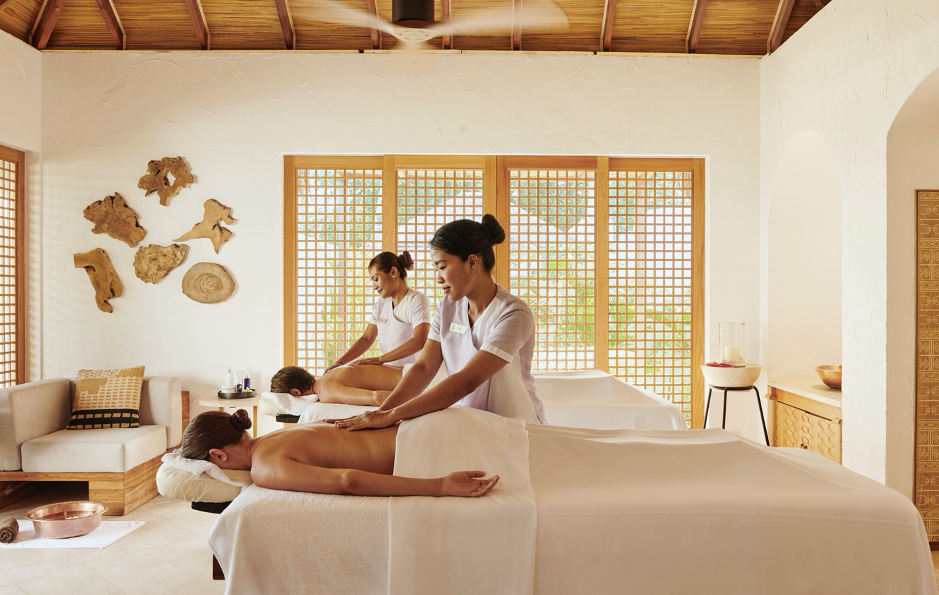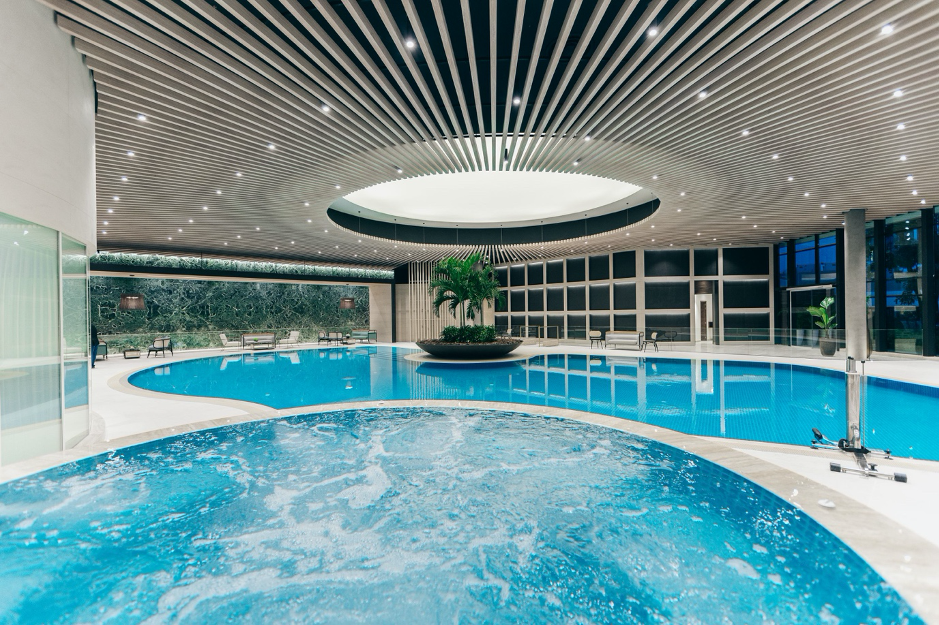So Spa, So Good
When it comes to creating a spa that invokes lasting loyalty, skilled staff and a sensual space should go hand in hand, says Suzanne Duckett
Designing a spa is essentially an exercise in intimacy. It’s the blueprint for a sacred space where strangers interact semi-naked in paper pants, towelling robes and, eventually, butt naked, face-down on a massage bed, in a dimly lit room with someone they only just met. You see? Complex.
There are big-picture, practical things to consider such as plumbing – endless pools and gushing water, showers, baths, sinks, taps – the latter in close proximity to a client relaxing and busy therapist handling slippery oils, gritty salt scrubs and unctuous masks. The indulged and the toilers side-by-side. Plus there’s location, views, whether to have multiple floors, how the spa connects with the hotel, where you locate your back of house, how many members are possible related to local population density etc. Add in a multitude of scenarios to consider: day guests, hotel guests bedding in for the night and local members… all those semi-clad people to please at all times!

Spa design requires a sort of emotional architecture, too: sensuality paired with professionalism, perfection with pragmatism. And this is no mean feat. The physical and emotional pathway, a holistic experience and the all-important journey must work hand-in-hand, heart-to-heart, navigating a maze of emotions and conditions, as well as floor plans. Committing to a spa treatment or a retreat experience or a programme over one hour to three days or longer is loaded with expectation and burning with a desire for some sort of transformation and need for change that’s sometimes life changing or even lifesaving. There are divorces to be avoided, depression to be alleviated, businesses to be plucked from the jaws of bankruptcy and heart attacks stopped in their tracks. Spas, be they the medical, spiritual or leisure variety, have their work cut out for them.
This is why the emotive element, which lies at the heart of every booking, should not be left until the end. Yet, more often than not, it is. So many world-famous spas that cost millions of euros to build and operate consider the sense and sensibilities of their clients and therapists at the last minute (if at all), and this sense of afterthought is palpable upon arrival. Miles of marble, the cost of which is more than an entire team of therapists for the opening year, are somehow clinical, lonely and soulless – and then hotels wonder why only 18 per cent of their guests book a treatment.
Let’s also take the size, vibe and layout of all-important treatment rooms. Usually this is gauged on ‘fitting the concept’ of the spa with a detailed specification drawn up by architects and designers before they’ve even had a whiff of the types of treatments and services provided. The very orchestrators and often even operators have rarely even experienced a massage, never mind a full-blown spa experience. The treatment menu and the practitioners performing said treatments should dictate size, yet this is often left to the end when it’s way too late. Design has to be guided by the treatment menu and the people, not the builders.
Bigger doesn’t mean better in the world of spa. I have had stupendous treatments in a three tiny-roomed establishment big on talented therapists, and numerous ‘meh’ ones in world-famous spas big on square footage and accolades and hitting targets, often causing them to miss the point. With operators facing increasing pressure to make figures stack up, many are now thankfully starting to ask whether the building of such big facilities is justifiable or wise.
The spa and wellness industry is developing rapidly, with higher consumer expectation and discernment and a more diverse set of needs than ever before. The spa was once viewed simply as an amenity to a hotel commanding a premium on the hotel’s day rate. Yet the maturing of the hospitality (lodging and spa) industry, coupled with challenging economic times and anxiety almost at an epidemic, has created a major change and, with it, a major opportunity to make money whilst genuinely treating people. The spa has become a profit-generating goddess in her own right, incorporating revenue management strategies to maximise yield in a competitive market place, with abundant global choice and, not to be forgotten, often a key differentiator in consumer decision-making. As a result, the concept of any spa should integrate fully with the hotel or resort, offering tangible and lasting wellbeing benefits and results, alongside a holistic experience that exceeds guest expectations in every way. If you are going to call them ‘touch points’, make them meaningful, please.

Today, spas need to be authentic, to have provenance. They need to understand the nuances that designers, architects and technical spa ‘experts’ often neglect – it’s not their area. I’ve had more spa treatments than hot dinners, spa-ing around the world for well over two decades. While I have gone as a professional, I am a mortal and my own personal needs have been met or not, along the way. It is about human touch and the humans doing the touching need to be remunerated properly for the job they do – the good ones are gifted healers and the ultimate ambassadors for returning customers and isn’t authenticity and a return to customer loyalty what we are seeking these days? I’ve had PR after PR walk me round a spa lauding the fixtures and fittings. “And what of the therapists, the people,” I ask, only to be met with a blank expression.
I have tried everything the spa world has to offer. I have fasted in Austria and Germany, I have downward dogged in more countries and spas I care to mention, have been scrubbed and rubbed and doused with Ayurvedic herbs in India and massaged and banana leaf-wrapped all over Indonesia. This unique experience and my in-built perfectionism mean I can bridge the often neglected, crucial and delicate guest/therapist balance with that of operator practicalities.
The best stories take us on adventure from the beginning, journeying through to conclusion. Spa storytelling is different, you need to know how you want the story to end in order to know where to begin. This is what so many ‘architects of wellness’ forget. My advice to those looking to build a spa or retreat is: don’t worry about size and don’t worry about brands to begin with. Put your money where the nous is and invest firstly in the view, in the relationship the building and the people in it will have with nature (especially if a city venue) and invest in the staff, because they will make or break your business. Once you’ve got that sorted, your unique story and the lead characters will become clear. Then, and only then, you can worry about your Carrara marble, your facilities and the size of your treatment rooms…
___
Suzanne has helped to create award-winning spa concepts for globally renowned spas and brands. She was also commissioned by various tourist boards including the Austrian Tourist Board to visit, critique and consult on a collection of the country’s finest spa hotels and resorts to help owners understand British spa-goers’ needs. She was editor of the Tatler Spa Guide for seven years and has been visiting, reviewing and writing about the world’s leading spas for more than two decades, also writing for influential publications including Condé Nast Traveller, The Telegraph, The Sunday Times and The Wall Street Journal.

